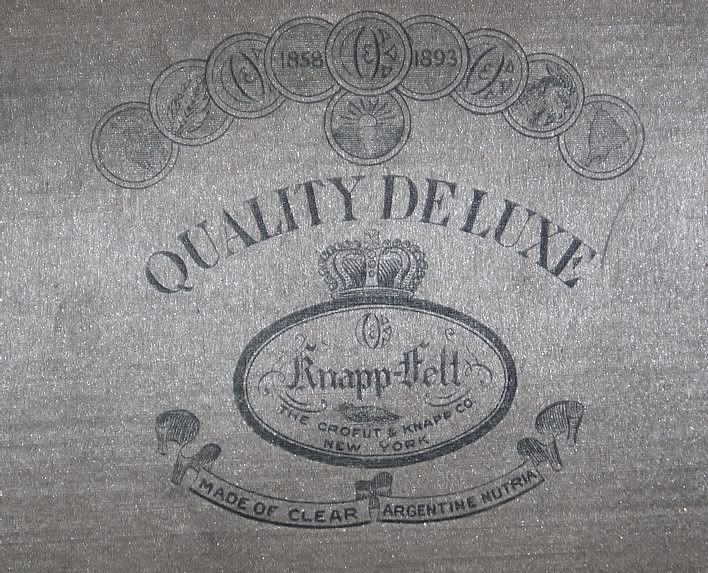Brad Bowers
I'll Lock Up
- Messages
- 4,187
Thanks, it's a late-'20s Dobbs.
Brad
Brad
My word, that hat is mint! Wear it with pride. BTW, may I use some of the images for my blog as I've never seen a nutria fur hat before now and it would be useful information.
How do you determine if it is Silk or some other material such as Nutria? I posted a P. & C. Habig Wien Topper a couple pages back and I assumed it was Silk but looking at Alan's K & N (by the way beautiful Topper!) I am not sure anymore. P. & C. Habig like K & N were known as fur felt hat makers.
How do you determine if it is Silk or some other material such as Nutria? I posted a P. & C. Habig Wien Topper a couple pages back and I assumed it was Silk but looking at Alan's K & N (by the way beautiful Topper!) I am not sure anymore. P. & C. Habig like K & N were known as fur felt hat makers.


 John Lofgren Monkey Boots Shinki Horsebuttt - $1,136 The classic monkey boot silhouette in an incredibly rich Shinki russet horse leather.
John Lofgren Monkey Boots Shinki Horsebuttt - $1,136 The classic monkey boot silhouette in an incredibly rich Shinki russet horse leather.  Grant Stone Diesel Boot Dark Olive Chromexcel - $395 Goodyear welted, Horween Chromexcel, classic good looks.
Grant Stone Diesel Boot Dark Olive Chromexcel - $395 Goodyear welted, Horween Chromexcel, classic good looks.  Schott 568 Vandals Jacket - $1,250 The classic Perfecto motorcycle jacket, in a very special limited-edition Schott double rider style.
Schott 568 Vandals Jacket - $1,250 The classic Perfecto motorcycle jacket, in a very special limited-edition Schott double rider style. 


Note that there are various grades of fur plush. There's beaver (which I have an example of in form of a bicorne made in the 1930s) which is as black as silk but the nap line is more random and not dead straight as silk plush is. Christys' and Patey's use a different fur plush each. Lock's use the same melusine as Christys' (I think they are made by the same factory). Patey's hats are rigid and heavy whilst the Christys/Lock ones are lighter and have some give to them. They are not made in town weight with one single layer of goss but thicker wool that has been blocked and then covered in the plush. Patey's uses many layers of goss and the plush they use is not than heavy. You really have to examine them and feel them in the flesh. Pictures won't really do.
Note that there are various grades of fur plush. There's beaver (which I have an example of in form of a bicorne made in the 1930s) which is as black as silk but the nap line is more random and not dead straight as silk plush is. Christys' and Patey's use a different fur plush each. Lock's use the same melusine as Christys' (I think they are made by the same factory). Patey's hats are rigid and heavy whilst the Christys/Lock ones are lighter and have some give to them. They are not made in town weight with one single layer of goss but thicker wool that has been blocked and then covered in the plush. Patey's uses many layers of goss and the plush they use is not than heavy. You really have to examine them and feel them in the flesh. Pictures won't really do.
I bought a top hat bucket on German ebay a few weeks ago that happened to come with a hat. I was mostly interested in the bucket for the top hat I restored. The hat that came with was an afterthought because the whole thing was so cheap (about $60 CAN total + shipping). There was only one photo so i took it on faith that it was in functional condition.
It arrived today and to my surprise the hat is in almost mint condition. It also appears to have been manufactured during the third Reich period. It was sold by a hatter located on "Adolf Hitler Str," and has a big german eagle on the lining. Anyone know much about this manufacturer or the value of large-size mint toppers from the third Reich?
Here are some photos: